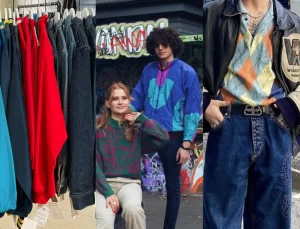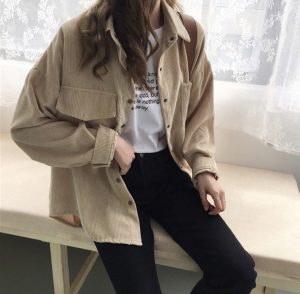“Sustainable Fashion: The Environmental Benefits of Choosing Vintage Clothing”

Title: Sustainable Fashion: The Environmental Benefits of Choosing Vintage Clothing
In the quest for sustainability within the fashion industry, vintage clothing emerges as a powerful ally. Choosing vintage garments not only offers a unique sense of style but also presents significant environmental benefits. From reducing carbon emissions to minimizing textile waste, vintage clothing plays a vital role in promoting a more sustainable approach to fashion. Let’s explore the environmental benefits of opting for vintage clothing:
1. **Reduction of Carbon Footprint**: One of the most significant environmental benefits of choosing vintage clothing is the reduction of carbon emissions associated with the production of new garments. The manufacturing process of clothing involves energy-intensive activities such as spinning, weaving, dyeing, and transportation. By purchasing vintage clothing, consumers eliminate the need for new production cycles, thereby reducing the carbon footprint associated with manufacturing and transportation.
2. **Conservation of Resources**: Vintage clothing helps conserve valuable natural resources, including water, energy, and raw materials. The production of new clothing requires vast quantities of water for processes such as dyeing and finishing. By opting for vintage garments, consumers prevent additional water consumption and reduce the strain on freshwater resources. Similarly, choosing vintage clothing conserves energy by eliminating the need for manufacturing processes that rely on fossil fuels.
3. **Minimization of Textile Waste**: The fashion industry is notorious for generating vast amounts of textile waste, with millions of tons of clothing ending up in landfills each year. By choosing vintage clothing, consumers divert garments from the waste stream and extend their lifespan. Vintage pieces are often well-made and durable, allowing them to be worn for many years without losing their quality or style. Additionally, purchasing second-hand clothing promotes a culture of reuse and recycling, contributing to the circular economy and reducing the environmental impact of fashion.
4. **Reduction of Chemical Pollution**: The production of new clothing involves the use of various chemicals, including dyes, bleaches, and finishing agents, which can have harmful effects on the environment and human health. By opting for vintage clothing, consumers minimize the demand for new production cycles and reduce the release of toxic chemicals into the environment. Vintage garments have already undergone these chemical processes during their initial production, making them a safer and more environmentally friendly choice.
5. **Preservation of Cultural Heritage**: Choosing vintage clothing not only benefits the environment but also helps preserve cultural heritage and craftsmanship. Vintage garments often carry unique design elements, historical significance, and artisanal craftsmanship that are not found in mass-produced clothing. By appreciating and wearing vintage clothing, consumers celebrate the creativity and craftsmanship of past generations, fostering a deeper connection to fashion history and cultural identity.
In conclusion, opting for vintage clothing offers numerous environmental benefits, including the reduction of carbon emissions, conservation of resources, minimization of textile waste, reduction of chemical pollution, and preservation of cultural heritage. By choosing vintage garments, consumers can make a positive impact on the environment while expressing their personal style and celebrating fashion history. As the fashion industry continues to grapple with sustainability challenges, vintage clothing emerges as a sustainable and stylish alternative that aligns with principles of environmental stewardship and conscious consumption.







